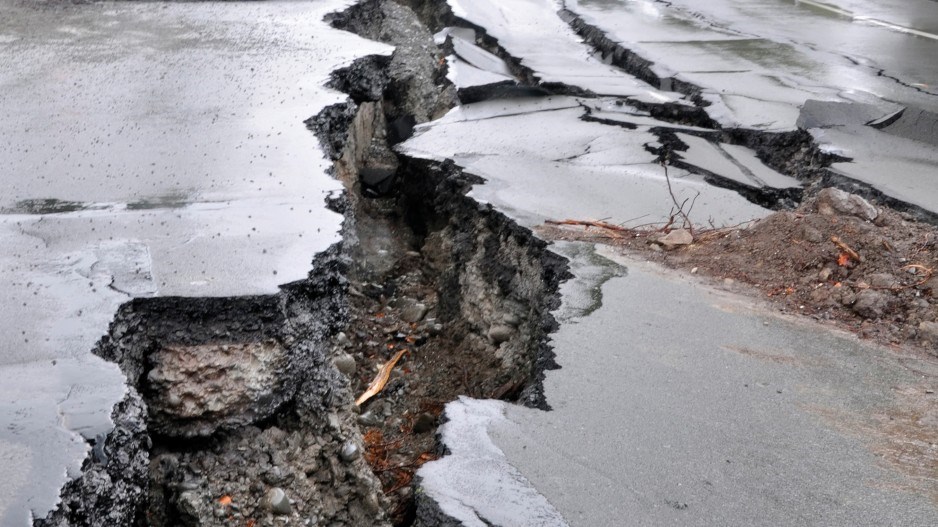With 40% of Canadians living in areas with a moderate to high risk of an earthquake, a C.D. Howe Institute report warns that Canada’s insurance industry would be a major casualty of a large, uninsurable natural disaster.
“Since the 2007-08 financial crisis, policymakers have paid much attention to the buildup of risk in the banking system,” said Nick Le Pan, senior fellow at the C.D. Howe Institute and the report’s author. “However, no equivalent discussion exists for the impacts of natural disasters to Canada’s economy.”
The insurance industry has adequate financial capacity to deal with an earthquake that has a one in 500 year chance of occurring and causes up to $35 billion in damages, but a natural disaster that results in more serious damages would send shockwaves through the entire insurance industry.
Canadian insurance companies are all members of the Property and Casualty Insurance Compensation Corp. (PACICC). If an insurance firm doesn’t have enough cash in reserve to pay all its claimants, the PACICC makes the payments and passes the costs on to its member insurance firms.
According to Le Pan, that raises concerns for the overall industry’s stability because it could create a domino effect that could drain cash reserves industry-wide.
Le Pan was an insurance industry regulator when earthquake regulations were implemented.
“Nick Le Pan is the right guy to be commenting on the state of regulations,” said Craig Stewart, vice-president of federal affairs for the Insurance Bureau of Canada (IBC), “and I believe our industry believed that the C.D. Howe report was quite thoughtful and presented some pretty sound solutions that we’re looking into.”
The 2011 Japanese earthquake and tsunami is an example of the mega-natural disaster used in Le Pan’s report. It caused major destruction across the country and could have created lasting problems for Japan’s insurers. However, a public-private partnership between the Japanese government and insurance companies allowed them to share costs and mitigate damages. That partnership had been in place in Japan since the 1960s.
The 2011 earthquake left insurance providers considerably depleted. Government and insurers were consequently worried that the industry could not survive another significant earthquake. As a result, the partnership was redesigned to provide further protection for insurers if another catastrophic, uninsurable event were to occur.
Local insurance industry representatives say the incident should convince Canada to look to Japan for guidance in establishing a similar partnership.
“The industry feels strongly, given the recent events in Christchurch [New Zealand] and Japan, we should learn from the experience of other countries and get in front of this,” said Stewart. “We know that a quake will happen at some point on the West Coast. We just want to be prepared for any contingency.”
Both C.D. Howe and the IBC emphasized that the insurance industry is not looking for a bailout. Citing large cash reserves, Le Pan said any federal government money would be provided only in the event of a major natural disaster that causes more than $35 billion in damages and threatens to destroy the insurance industry.
“I think there are legitimate concerns about designing this so it won’t cost an arm and a leg and won’t lead to being a general bailout of the companies, which we don’t want. That’s not the idea,” said Le Pan.
The report found that there are several mechanisms that would prevent the federal backstop from being a bailout for the industry. For example, the industry would be still be required to provide for extreme disasters; only certain, highly unlikely events would receive the government protection.
Without a federal government financial backstop for the industry, Stewart said Ottawa would likely have to pick up the tab anyway. “We just want to ensure that our entire industry isn’t going to topple, should that black swan event occur.”




